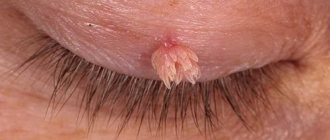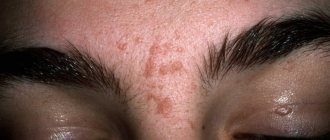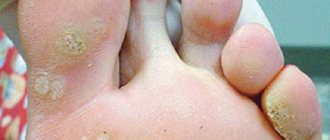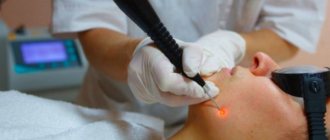Everyone knows what a wart is. But not everyone can imagine why they suddenly appear on different parts of the body.
Dermatologists define a wart as a skin growth of a predominantly benign nature. It may look different (depending on the type) - different in color, look like a nodule, papilla, cauliflower, chicken scallop.
Warts can appear on different parts of the skin. Often, the localization depends on what type of HPV (namely, it is considered the main culprit in the development of these tumors) is present in the body. Quite often, these neoplasms are observed on the skin of the mammary glands - on top, under the breasts, on the nipples, between the breasts. And one type (papillomas) sometimes develops inside the milk ducts.
Localization of growths
When activation of the HPV infection has already occurred, specific growths may appear on the neck, arms, groin area, and also on the chest. If the necessary measures are not taken in a timely manner, warts can grow uncontrollably over the entire surface of the skin. Experts themselves say that papillomas can affect the delicate skin under the breasts, nipples and areola. In some cases, warts may appear in the milk ducts of the breast.
When the growths become larger, they cause a lot of discomfort when wearing everyday clothes and underwear. Most often, the situation is provoked by the systematic use of antibiotics, as well as serious disturbances in the functioning of internal organs. Pathological neoplasms can cause a woman a lot of discomfort during lactation.
Numerous reviews indicate that papillomas under the mammary glands interfere with wearing bras, since during movement there is strong friction of delicate tissues. This could result in serious injury. Due to the lack of air circulation and sweat accumulation, secondary infections can occur.
But the situation is considered more dangerous when papillomas are located in the milk duct. Diagnosis of the disease is very difficult, since a visual examination in this case is irrelevant. It is possible to prevent further growth of tumors in the breast only with the help of universal medical equipment.
Itchy warts on the chest
As we have already seen, warts, although they are benign neoplasms, can in certain cases carry the risk of degenerating into cancer. If you have small warts under your breasts, you shouldn’t worry too much. With the strengthening of the body's defenses, they can disappear on their own. But you should still monitor their condition carefully. A red wart, especially if it itches, is a cause for concern.
A red itchy wart on the chest should be alarming. One of the reasons for itching and redness may be the beginning of the malignancy process. This may also indicate that the formation is growing, damaging nearby healthy tissue.
Particularly severe itching can be caused by the proliferation of papillomas; this usually occurs due to a weakened immune system. Viral infection of healthy skin is always accompanied by unpleasant sensations. Dermatologists warn that if a wart bothers you, it means it is growing. And this is a dangerous sign. The color of the formation changes, pain is felt at the site of its localization - urgently contact a specialist.
Main reasons for development
The scientific literature describes in detail that infection with HPV infection occurs through close contact with the main carrier. The virus enters through mucous membranes or blood. The main percentage of all patients were infected through cracks, cuts and abrasions on the body, as well as during sexual intercourse. To date, experts have been able to identify more than a hundred varieties of HPV, some of which are absolutely safe for humans, but others increase the level of oncogenicity several times.
The real provocateurs for the rapid development of the virus are the following factors:
- serious hormonal imbalance;
- the presence of pathologies that can greatly weaken the protective function of the immune system (bronchial asthma, diabetes, heart disease);
- frequent stress;
- parasite infection;
- depression;
- lack of minerals, vitamins;
- abuse of bad habits (alcohol, drugs, cigarettes);
- sedentary lifestyle;
- lack of sunlight.
There are quite a few factors that can trigger the development of the disease. But if papillomas have already appeared, the patient should adhere to the basic recommendations of the attending physician . Otherwise, warts will grow uncontrollably for the following reasons:
- Failure to comply with basic hygiene rules.
- The patient has hyperhidrosis. This condition often causes uncontrolled growth of warts just under the mammary glands.
- Traumatization of the skin on the chest.
- Damage to the skin of the nipples while breastfeeding.
- Use of low-quality cosmetics.
- Wearing a tight bra that doesn't fit properly.
If a woman begins to notice that there are more papillomas and they are increasing in size, it is absolutely impossible to delay visiting a qualified doctor, especially since such growths are not only a cosmetic problem. Infections with HPV types 54, 11 and 6 are characterized by increased oncogenicity.
Prevention
To avoid the development of papillomas, it is worth thinking about preventive measures. Regarding HPV infection and its manifestations in the chest area, there are several preventive methods:
- Vaccination.
- Regular examination by a mammologist.
- Increasing the overall resistance of the body.
The latter method has a fairly broad focus, including proper and nutritious nutrition, giving up bad habits, hardening and playing sports, taking vitamins and immunomodulators.
There are many ways to get rid of papillomas and warts, but any treatment and preventive measures must correspond to the individual characteristics of the patient.
Once they appear on the chest, papillomas bring considerable aesthetic discomfort, and in some cases even become an obvious medical problem. Such tumors must be examined and removed, but no one can do this better than a doctor.
Common symptoms
Papillomas on the nipples and under the mammary glands are clearly visible during normal visual examination. If the growths are located in the milk ducts, they can be identified by the following symptoms:
- increased sensitivity and soreness of the nipples and areola;
- periodic tingling inside the mammary gland;
- nipple discharge;
- burning in the chest.
Women need to remember that these symptoms cover more than just an HPV infection. Signs are characteristic of premenstrual syndrome and pregnancy. An accurate diagnosis can be determined using hardware diagnostics.
Intraductal papillomas
Papillomas can affect not only the skin of the mammary glands. A special type of cystadenomas can develop inside the gland in the milk ducts. If, with small size warts located on the skin, there is practically no particular pain, discomfort and other unpleasant sensations, then even a small cystadenoma can exhibit severe symptoms. The woman complains about:
- discomfort in the mammary glands, burning;
- quite severe pain in the nipple area;
- pathological discharge of a whitish, transparent, brown, greenish, sometimes even bloody nature.
If the cystadenoma is localized in the main duct, it can be palpated - in the area of the areola, upon palpation, a round nodule of elastic consistency is felt. When pressed, the patient feels pain, and discharge is observed from the nipple. If a secondary inflammatory process occurs, the nodule becomes denser with the development of edema of the surrounding tissues.
To accurately determine the nature of the formation, differential diagnostics is carried out, including the following studies:
- a smear of fluid released from the nipple;
- blood test to determine HPV type;
- Ultrasound of the breast;
- ductography;
- mammography.
Intraductal papilloma is a precancerous lesion of the breast. Therefore, it is treated exclusively by resection. Typically, a sectoral resection is performed during which tissue with affected milk ducts is removed.
Question to the expert
Hello. My name is Victoria, I'm 36 years old. A few months ago I discovered a small light brown growth under my breast, similar to a wart. Friends advise using celandine or garlic tincture to reduce it. Tell me, do folk remedies help with warts on the chest?
First, you need to visit a dermatologist to accurately determine the nature of the formation. Only a specialist can prescribe effective treatment. Yes, of course, products based on these medicinal plants are very effective for treating warts. But at the same time, they are characterized by high biological activity, often causing serious allergic reactions. Therefore, before use, a mandatory consultation with a doctor is required.
Types of papillomas
Qualified dermatologists define breast growths as skin growths, which in 98% of cases are benign. Papilloma can look different, as it all depends on the variety. Some growths may look like a chicken comb or a small nodule; often the surface is covered with specific papillae.
Experts themselves note that the following types of papillomas can develop on women’s breasts:
- Flat formations, colored light yellow or flesh-colored. Outwardly, they resemble tiny moles. People often call them youthful. Flat papillomas develop in girls when the overall protective function of the body decreases. When immunity levels are restored, warts disappear without medical intervention.
- Pointed (thread-like) growths. The shape of these papillomas is more reminiscent of pendulous papillae. They are most often diagnosed in adult women over 47 years of age, but there are exceptions. Genital warts are localized not only under the breasts, but also on the neck, where they are often injured.
- Age-related keratomas (senile warts). Unlike the two previous options, these tumors are not the result of the negative effects of the virus. Such warts are represented by a specific seborrheic skin pathology, as they arise due to disruption of the sebaceous glands. Externally they resemble freckles.
What types exist
Papilloma is formed from epithelial cells of the excretory ducts. The base can be wide or “pedaled”, soft or hard.
Neoplasms can be of several types:
- Flat papilloma. More often diagnosed in young people. Flat papillomas are flesh-colored or yellowish in color. They occur due to hormonal imbalance and go away on their own as it normalizes.
- Senile papilloma. It is of non-viral origin. They appear after the age of 40 and have the appearance of neoplasms devoid of pigmentation. Shape – round, flat or protruding.
- Filiform papilloma. This type of neoplasm occurs against the background of changes in the hormonal system. In this regard, papillomas form during pregnancy and menopause, in older people, people who are obese or have diabetes. They have the appearance of acute cell growths.
The type of tumor can be determined by undergoing appropriate diagnostics. Based on its results, treatment is prescribed.
Possible complications
In some cases, papillomas on the chest can greatly increase in size and become inflamed. The main reason for this situation may be the woman’s stressful condition, physical trauma to the breast, severe nervous shock, failure to comply with hygiene standards, and wearing tight underwear. Most often, gynecologists are consulted with an advanced stage of inflammation. If you inadvertently scratch or graze your breasts, this can trigger the penetration of germs and the subsequent progression of the virus.
Under the influence of various unfavorable factors, papilloma can change its color, which is why it will smell unpleasant, and the breast itself will burn. After some time, fluid of different colors may be released from the nipple. When all these factors appear, it is necessary to remove the tumor as quickly as possible, since only this will help the woman protect herself from the development of cancer. Only a qualified doctor can carry out such manipulations.
Experts say that you should go to the hospital in the following cases:
- the warts have significantly increased in diameter and changed their color;
- touching the breast causes pain;
- nipples become more sensitive;
- redness appeared on the chest;
- the woman began to notice that liquid mixed with blood was being released from the papilloma;
- the structure of the wart has become more rigid.
How does infection occur?
- Through sexual contact
- During pregnancy
- In public places (bathhouse, swimming pool, toilet)
- Household contact (the virus can remain on the surface of furniture or household products for a long time)
- Self-infection (shaving, depilation)
The cause of growths on the skin is the papillomavirus. Infection with this virus can occur during sexual contact with an infected person.
This often happens in public places, such as a bathhouse, swimming pool, or toilet. Or from simply touching an infected object.
The virus will remain dormant until a suitable environment for its progression arises.
It often happens that papillomas on the breast occur during pregnancy. Firstly, hormonal levels change. Secondly, during nine months of pregnancy, the body becomes very pregnant and the immune system weakens.
At this time, you should be observed by a doctor, but do not resort to radical methods of treatment.
Related article:
Why do papillomas appear on the eyelid?
Professional diagnostics
In order for a doctor to detect an HPV infection, he must prescribe a standard clinical examination to the patient. Thanks to the analyzes obtained, dermatovenerologists can accurately recognize the disease. Papilloma in the mammary duct can be diagnosed using a modern ultrasound machine, as well as a special x-ray. The versatility of this equipment makes it possible to detect the location of the tumor, its stage of development, and its diameter.
The presence of human papillomavirus can be confirmed using an analysis called “Polymer chain reaction”. To make the result as accurate as possible, specialists take a smear from the walls of the uterus. Timely removal of papillomas will help avoid the risk of malignancy. After all, the longer it stays in the milk duct or on the skin, the more it will grow.
Only after a full examination can a specialist prescribe suitable medication or hardware treatment. If the patient suspects that the wart is malignant, the woman will be referred to an oncologist.
Forecast
Most papillomas are benign . If the disease is properly treated, the prognosis is favorable. Relapse occurs only if not all affected areas were removed or the disease was diagnosed at the last stage.
Papillomas in the chest area are quite common. There are many methods of treating them. The choice of a specific one depends on the stage of development of the disease and the characteristics of the patient’s body. Timely diagnosis will allow timely detection and treatment of malignant tumors.
Removal methods
Since there is always a certain risk of papilloma degeneration, it is strictly prohibited to remove them at home. The most appropriate treatment strategy should be chosen by a qualified dermatologist after a thorough examination. The therapy itself includes surgical and conservative methods. But practice shows that it is simply impossible to cope with neoplasms without surgical intervention.
Specialists can use several basic methods to excise warts on the chest. All of them belong to the minimally invasive category, due to which recovery after surgery occurs as quickly as possible. The final choice of one method or another depends on the type of papilloma , as well as its location:
- High-quality exposure to liquid nitrogen. It is actively used in modern medicine to remove flat warts. The procedure is practically painless, tumors disappear after 4-7 treatments.
- Laser removal of tumors. After treatment, no scars remain, and the keratinized crust disappears on its own within a few days. Thin laser beams affect microscopic vessels in the tumor, so that nearby tissues are not damaged. Relapses after this procedure are extremely rare.
- Modern electrocoagulation. The structure of the papilloma is affected by direct and alternating current, which makes it possible to achieve great success in the fight against such tumors. This procedure is actively used to remove filiform warts.
- Radio wave frequency. For the procedure, the specialist uses a universal knife. During the manipulations, the patient does not experience any painful sensations; repeated manifestations of papillomas are recorded extremely rarely.
Unaesthetic warts on the chest and under the mammary glands are a peculiar result of the activation of HPV infection against the background of decreased immunity. That is why, in order to avoid relapse, experts recommend using universal drug therapy, which has a positive effect on all organs and systems.
Drug therapy
The modern pharmaceutical market offers customers a huge number of different drugs that are designed to fight the papilloma virus. Antiviral and immunostimulating medications are considered the most effective and affordable today. Only a doctor can prescribe this or that drug, since he must first study all the patient’s tests. The most popular drugs are:
- Polyoxidonium;
- Isoprinosine;
- Cycloferon;
- Lycopid.
Numerous reviews from women indicate that the drug Isoprinosine is the most effective. The medicine is available in the form of tablets. In pharmaceuticals, this remedy is considered the most popular in the fight against the human papillomavirus. The medicine helps get rid of papillomas under the breasts due to its complex effects:
- activation of lymphocytes;
- effective blocking of HPV enzymes;
- activation of the body’s natural production of interferon substances.
To achieve the best result, you need to take the medicine one tablet 2 times a day.











